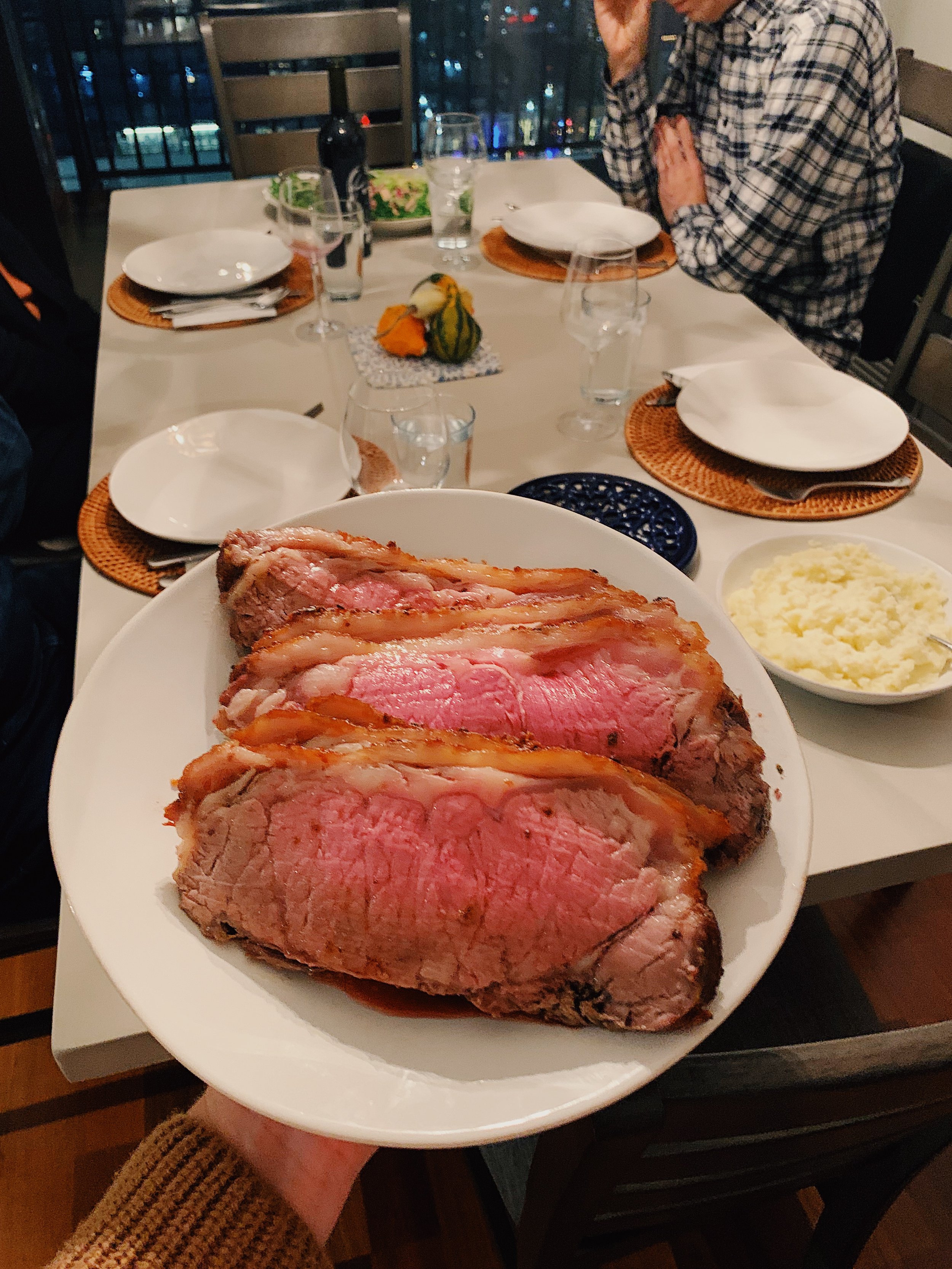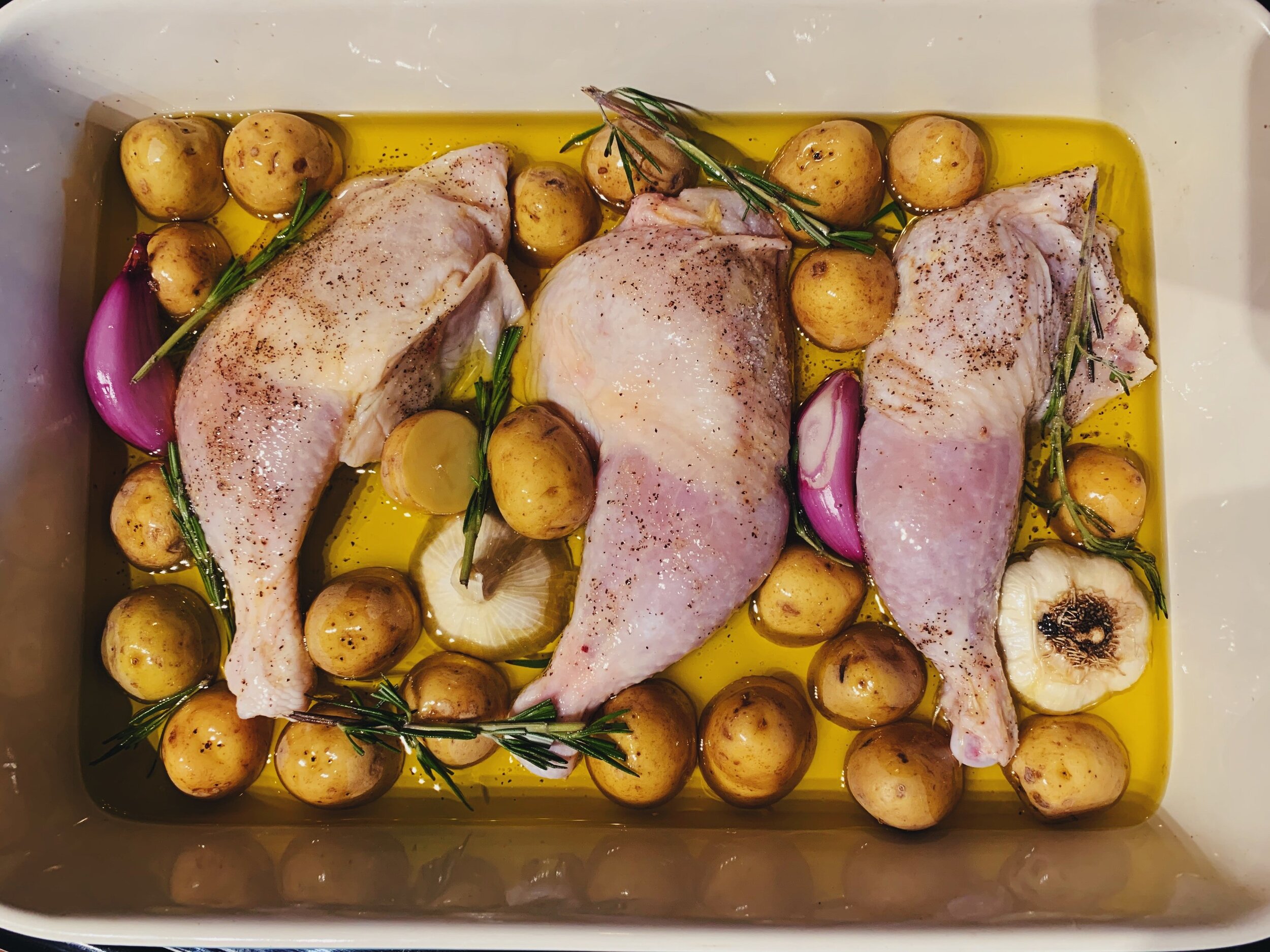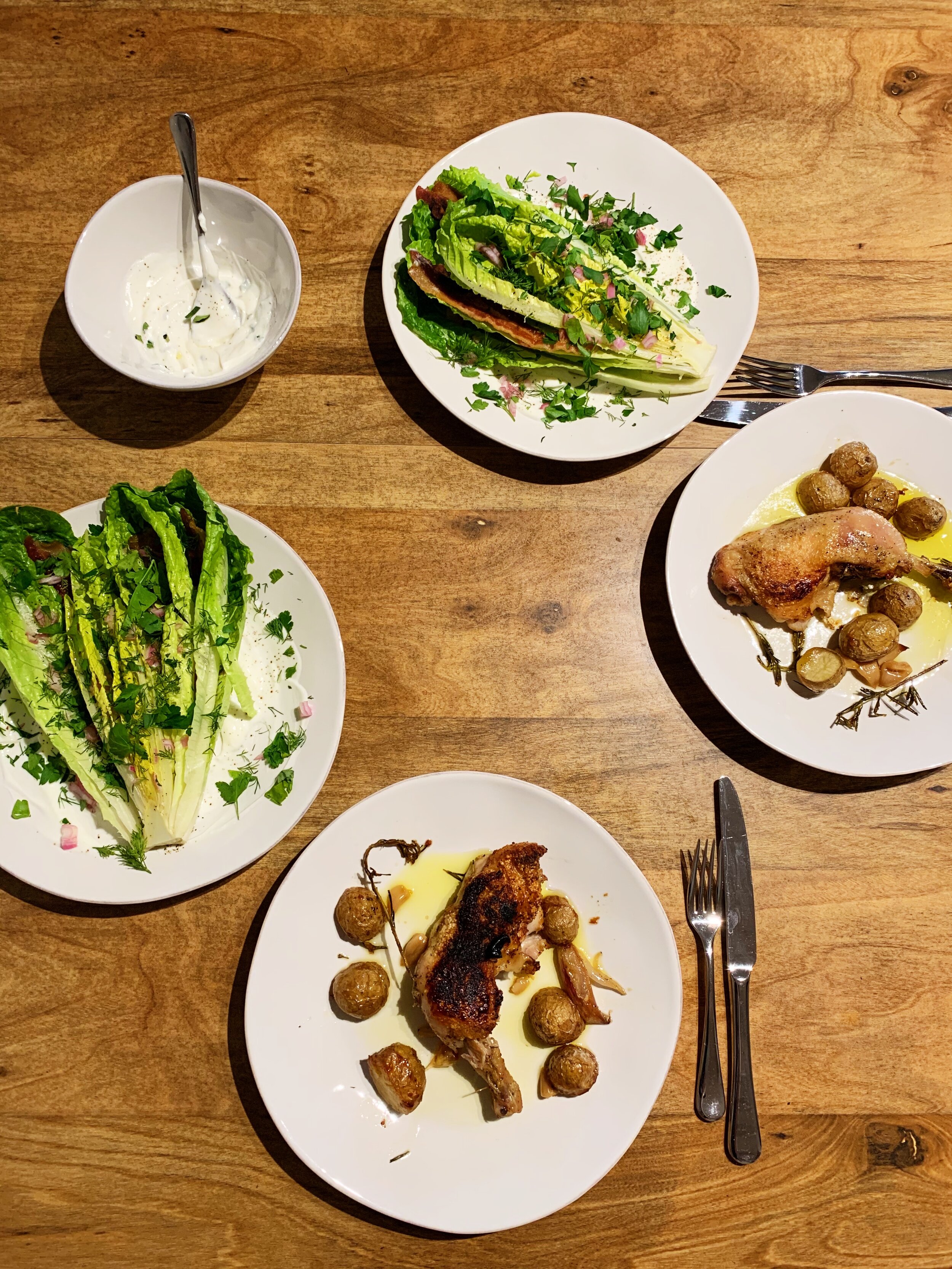I’ll just come right out and say that this 4.7 lb. hunk of beef is one of my greatest achievements in the kitchen to date. Attaining the perfect internal temperature and color of a large piece of meat has never been a strong suit of mine. Whether it’s an oven that’s unpredictable or my own issues with patience or judgment of done-ness, I’ve tended to overcook meat.
This year, I committed myself to growing my meat skills. An obvious step one? Buy a reliable digital meat thermometer. Yes, I’ve been rightly accused of slicing open a chicken breast multiple times before it’s done to look for “pinkness.” My meat thermometer has saved me many premature hackings of quality protein. Second step, buy an oven thermometer. Ovens, especially old ones, lie. I’ve yet to live in an apartment where the oven temperature is exactly as listed.
Third step, trial and error. Though I haven’t failed spectacularly, I’ve been willing to. It’s the willingness that makes all the difference. Alison isn’t afraid of big cuts of meat, and her recipes have given me the chance to stretch my wings. Of them all, two recipes seemed most daunting to me, this rib roast, and her yogurt-marinated leg of lamb which supposedly feeds 8-10 people (that will happen soon). So you could say I was nervous.
A rib roast is intimidating, first of all, because it’s expensive. The cost of failure was a third of my entire grocery bill. Second, though active involvement is quite low, the recipe requires a lot of choices to be made by the cook, which feels risky. So I asked myself, when’s the last time you did something you’re proud of that didn’t require risk? *crickets*..... Let’s dive in.
I salted the roast, then made my first big decision to let it sit at room temperature for two and a half hours (instead of in the fridge for far longer). I guess that wasn’t so hard? Meanwhile, I prepped the marinade: chopped anchovy, rosemary, and grated garlic with salt and olive oil. Here, I’d recommend the more marinade the better. With such a large roast, it’s hard to overdo it with flavor.
With a good bit of oven temperature monitoring, the roast cooked for two hours and five minutes at 250 degrees. Alison gives a range of time here, so I chose to check it on the early side - and what do you know, it was ready to go! The internal temp you’re looking for is 110 degrees, and Alison says it should rise to 125 by the time you’re ready to sear/or flash-roast it (my term for roasting briefly at a high temp). Again, much to my delight, the meat rose to 125 degrees exactly while I heated the oven to 500 degrees. (Is it weird that I’m delighted by instructions coming true? It so rarely seems to work out this well.)
I made my third and fourth choices -- due to the time of day, I chose not to let the roast sit at room temperature for up to four hours, but only for twenty minutes as the oven temp rose. Then I chose to brown the fat by flash-roasting, instead of searing. Why? Clean up. Imagine the fatty oil splattering every surface of my kitchen if I seared the meat in a skillet. Nope. Not today.
After just 10 minutes, the fat was properly browned and the anchovy bits appeared well-crisped. (And my floor remained without oil spills.) I sliced the meat with bated breath…
And it looked perfect. It even tasted perfect - melt-in-your-mouth tender. As I said, this rib roast is one of my crowning achievements in this project, due to a convergence of careful attention, following instructions, and definitely luck. I served it with leftover Thanksgiving mashed potatoes and Alison’s Little Gems and Cabbage salad (also phenomenal, post to come).
Friends, if this recipe also intimidated you when reading through nothing fancy, let this be your encouragement to give it a go. If you pay attention, follow her advice, and maybe say a few quick prayers, this recipe could become one of your proudest meals, too.
176 recipes cooked, 49 to go.



















